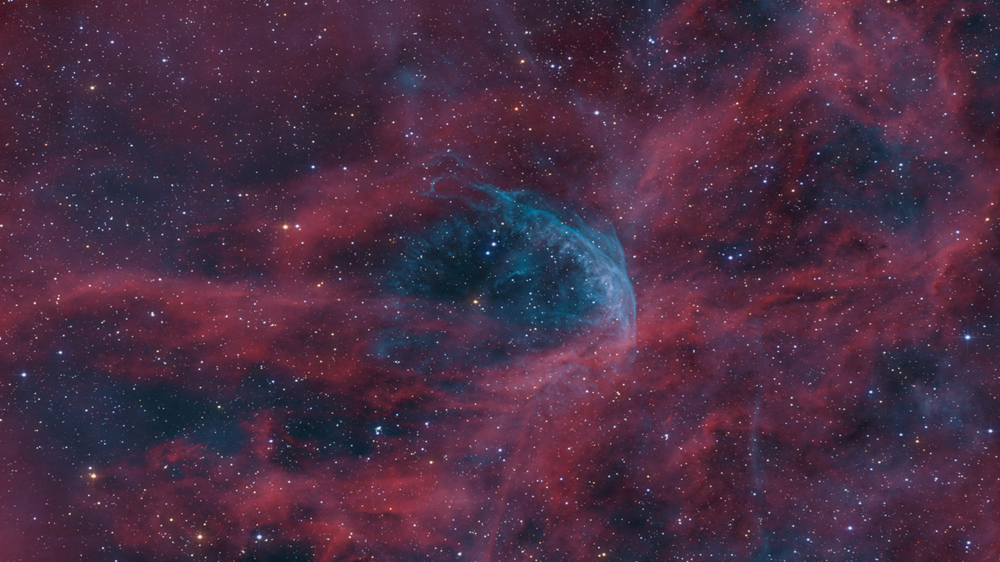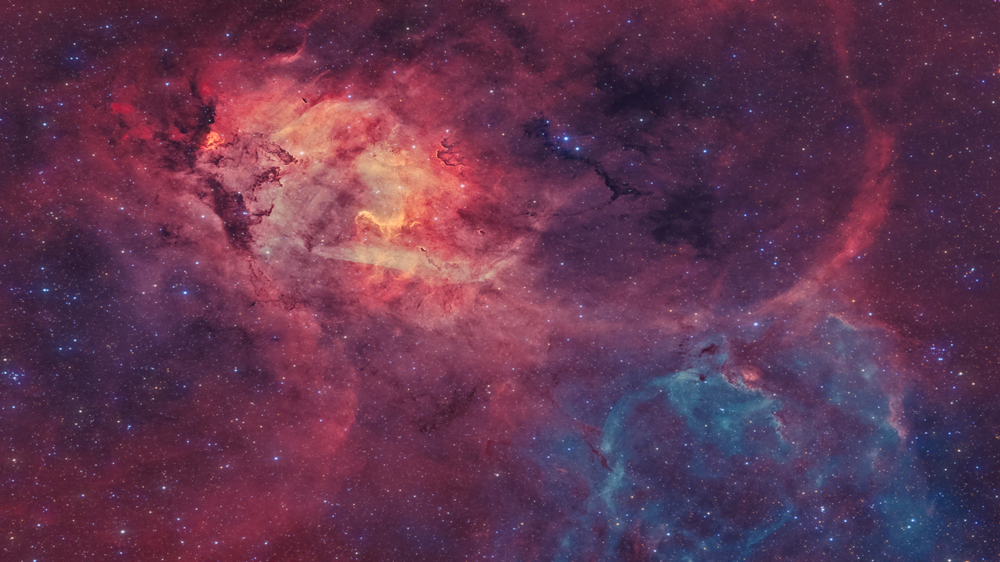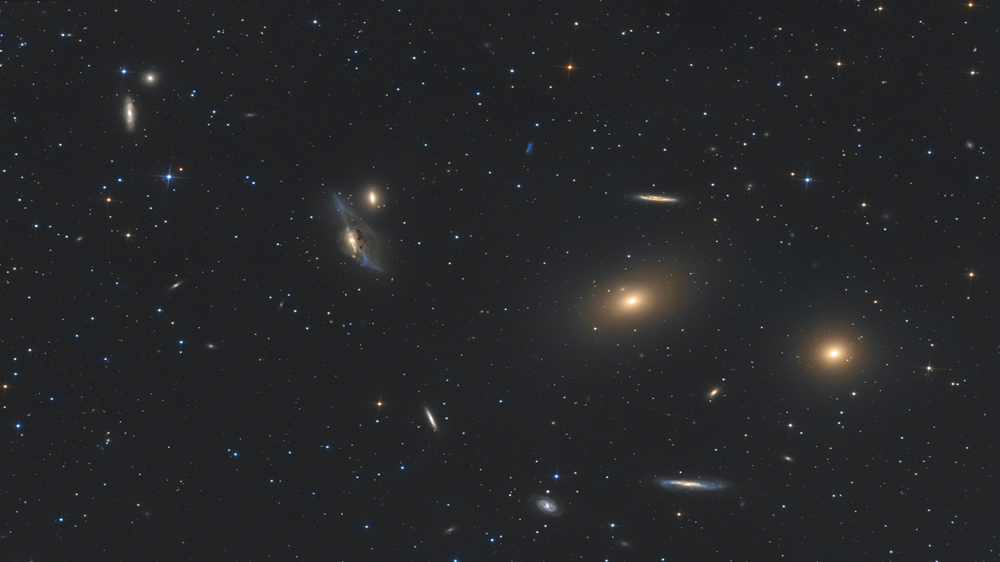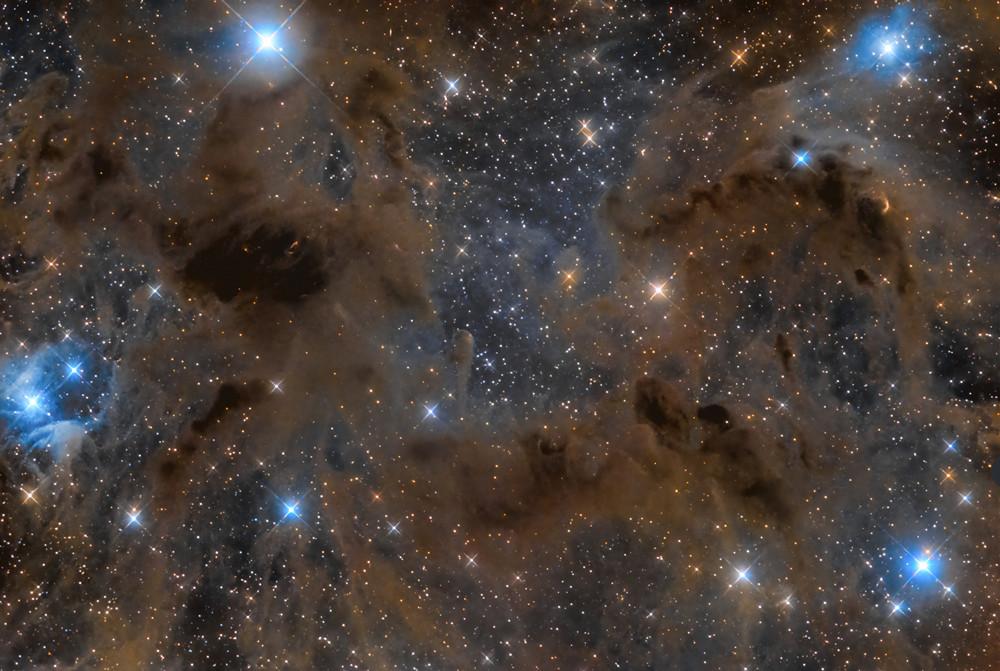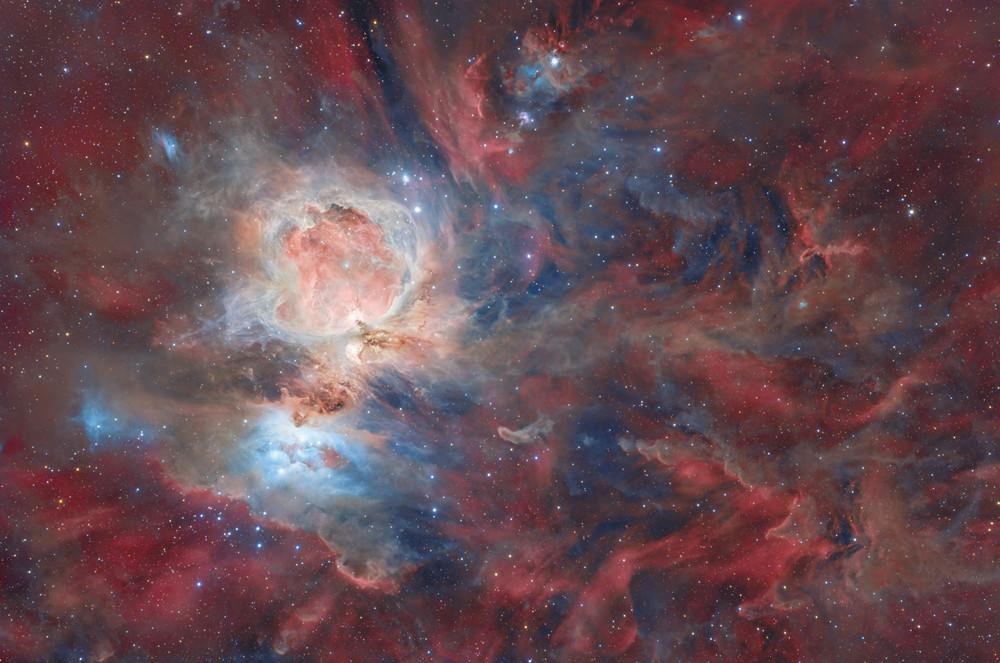[Starry Story] Christophe VERGNES (France)
[Starry Story] Christophe VERGNES (France)
My name is Christophe VERGNES, 41 years old. I live in RITZING, a little town in France, at the Luxembourg and German border.My name is Christophe VERGNES, 41 years old. I live in RITZING, a little town in France, at the Luxembourg and German border.
I work in Luxembourg as a robotic technician.
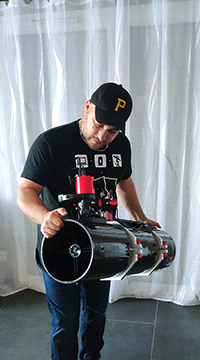
After moving to the countryside 7 years ago, I discovered a fascinating starry sky there, which made me want to buy a telescope.
In the spring of 2022, I took the plunge and bought my first telescope, a Newton 200/1000 on an equatorial mount to do observation and try deep sky photography.
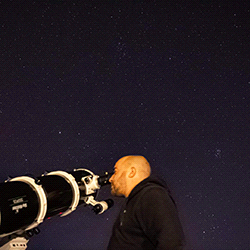
After several weeks of observation and great emotions with Saturn, Jupiter and the moon, I decided to mount the family camera on the telescope, a Canon 700D, and do a 30 second exposure. It was a click for me.
I have often found that this passion was very difficult, both in time and in learning each step, from setting up the frame to processing the image. Not knowing anyone who practiced astrophotography, I had to learn on my own with video tutorials and on forums.
I quickly sold my first equipment to buy something more suitable for astrophotography and more efficient.
I chose a ZWO ASI294MM associated with the LRVB SHO Optolong filter with a Takahashi FSQ85EDX bezel on an Ioptron CEM70 mount and a Newton carbon 200/800 ONTC. I also recently bought two new cameras, a ZWO ASI2400MC and an ASI6200MM also associated with Optolong filters, I also have a SW AZ mount that I use with a Sigma Art 135 mm lens.
►Team Stellae Orientis
Thanks to internet, I met people from the same region as mine in France. We exchanged and shared a lot about our session and setups.
One thing leading to another, we met and carried out nomad sessions together. Now, we are a band of friends, and we created a team named “Stellae Orientis Astrophotographie”.
We are helping each other to learn and share a lot of editing tips. We also make collabs on the same target. It is a real pleasure to have the chance to live this passion with another people who are in the same addiction level as mine!
I feel very lucky, and we have a lot of ambitions for the future.
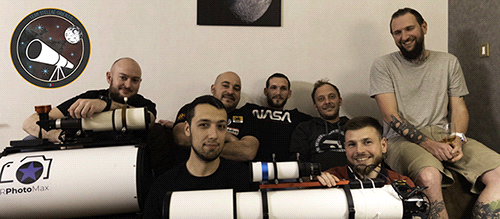
►Pictures with Optolong filters
Wolf Rayet 134 HOO
WR 134 is a variable Wolf-Rayet star located around 6,000 light years away from Earth in the constellation of Cygnus, surrounded by a faint bubble nebula blown by the intense radiation and fast wind from the star. It is five times the radius of the sun, but due to a temperature over 63,000 K it is 400,000 times as luminous as the Sun.
WR 134 was one of three stars in Cygnus observed in 1867 to have unusual spectra consisting of intense emission lines rather than the more normal continuum and absorption lines. These were the first members of the class of stars that came to be called Wolf-Rayet stars (WR stars) after Charles Wolf and Georges Rayet who discovered their unusual appearance.
Imaging Telescopes Or Lenses
TS-Optics 200mm/8" ONTC f/4 Newtonian (carbon tube)
Imaging Cameras: ZWO ASI294MM Pro
Mounts: iOptron CEM70
Filters: Optolong Blue · Optolong Green · Optolong H-Alpha 3nm · Optolong OIII 3nm · Optolong Red
Accessories: ZWO ASIAIR Pro
Software: Adobe Photoshop · Pleiades Astrophoto PixInsight
Guiding Cameras: ZWO ASI290MM
Lion nebula SHO
Nebula SH2-132, called the Leo Nebula for its resemblance to this animal, is an extended nebula in the constellation Cepheus. It is about 10,400 light-years distant from Earth and its diameter covers more than 250 light-years. The stars responsible for the ionization of its gases are very hot and massive; in particular, two Wolf-Rayet stars have been identified, known under the letters HD 211564 and HD 211853. They emit their radiation mainly in hydrogen (Hydrogen-Alpha) and also very weakly in oxygen (OIII). The dark patches inside the nebula's head are due to soot blocking light. There are also prominent dark nebulae that block starlight behind them outside the main area of Sh2-132.
It's a HOO version with the SHO stars mixed and processed to have the RGB colors.
Imaging Telescopes Or Lenses: TS-Optics 200mm/8" ONTC f/4 Newtonian (carbon tube)
Imaging Cameras: ZWO ASI294MM Pro
Filters: Optolong H-Alpha 3nm 36 mm · Optolong OIII 3nm 36 mm · Optolong SII 3nm 36 mm
Accessories: ZWO ASIAIR Pro
Software: Adobe Photoshop · Cyril Richard Siril · Pleiades Astrophoto PixInsight
The Markarian's chain
It is a small part of this immense galactic complex, a set of galaxies extending over almost 2 °, and belonging to the much larger heap of the Virgin, around 50 million light years .
She is named according to Armenian astronomer Benjamin Markarian, who was the first to have discovered her in the 1960s.
Imaging Telescopes Or Lenses: TS-Optics PHOTON 200mm/8" f/4 Newtonian
Imaging Cameras: ZWO ASI294MM Pro
Mounts: iOptron CEM70
Filters: Optolong Blue 36 mm · Optolong Green 36 mm · Optolong Luminance 36 mm · Optolong Red 36 mm
Accessories: ZWO ASIAIR Pro
Software: Adobe Photoshop · Cyril Richard Siril · Pleiades Astrophoto PixInsight
LDN 1448 and LDN 1451 Molecular cloud in Aries
Imaging Telescopes Or Lenses: TS-Optics PHOTON 200mm/8" f/4 Newtonian
Imaging Cameras: ZWO ASI294MM Pro
Mounts: Sky-Watcher EQ6-R Pro
Filters: Optolong Blue 36 mm · Optolong Green 36 mm · Optolong Luminance 36 mm · Optolong Red 36 mm
Accessories: ZWO ASIAIR Pro
Software: Adobe Photoshop · Cyril Richard Siril · Pleiades Astrophoto PixInsight
The Orion Nebula and its fire dust
I share with you probably the most famous and photographed target of each winter: the Great Orion Nebula.
This project exists because we needed to find a target once the first target of the evening (still on processing) was no longer visible, while keeping the same camera orientation.
At the beginning, it was just for fun, but since the first project lasted a long time, I was able to acquire a lot of H-Alpha signal, and then the chance to photograph Orion in color came up.
So this project quickly took an interesting scale...
The acquisition of the H-Alpha signal started in December 2022 and will be realized on 5 sessions to have a total of 260x300s and 150x10s, that is to say almost 22h. All these 5 sessions were done from my home, in Meurthe-et-Moselle, under Bortle 5 SQM 20.35 sky
For the RGB on the other hand, I was able to take advantage of a favorable shooting window mid-February 2023 on 3 consecutive nights. My friend Christophe Vergnes, living under a better sky than me (Bortle 4 SQM21), proposed me to install my setup at his place and to manage it in order to get a quality RGB signal.
The great class.
I accepted and thanks to his kindness, we have after sorting 300x180s and 200x5s, a little more than 15h.
This being my last project with the Taka FSQ85EDX and ZWO2400MC setup before moving on to the mono camera, I wanted to conclude this chapter by including my two friends Yann Sty and Christophe in the photo processing.
The mix of our 3 knowledge allowed us to offer you this version of M42, a mix of natural colors with a very red hydrogen Alpha signal, giving a 3D and motion impression to the image.
Imaging Telescopes Or Lenses: Takahashi FSQ-85EDX
Imaging Cameras: ZWO ASI2400MC Pro
Mounts: Sky-Watcher EQ6-R Pro
Filters: Optolong L-Ultimate 2"
Accessories: ZWO ASIAIR Plus
Software: Adobe Photoshop · Cyril Richard Siril · Pleiades Astrophoto PixInsight
What’s next?
Of course, I will continue Astrophotography
I bought a new Teleskope a Takahashi Epsilon 160ed
Thanks to the Optolong team for collaborating with my team and me, it's an honor for me.
Keep skies safe and clear!
Sincerely, Christophe.

